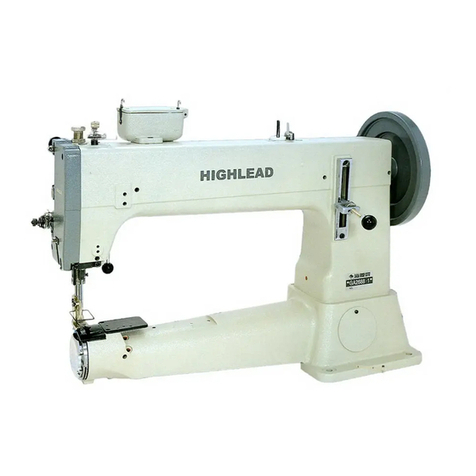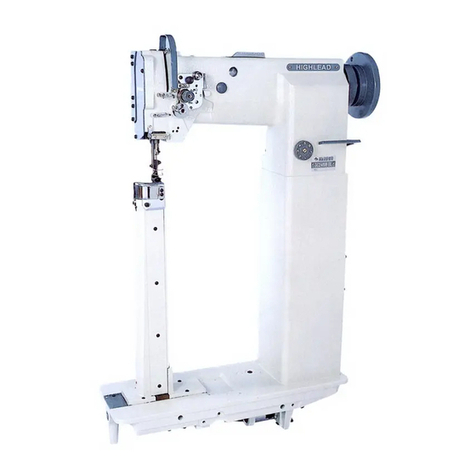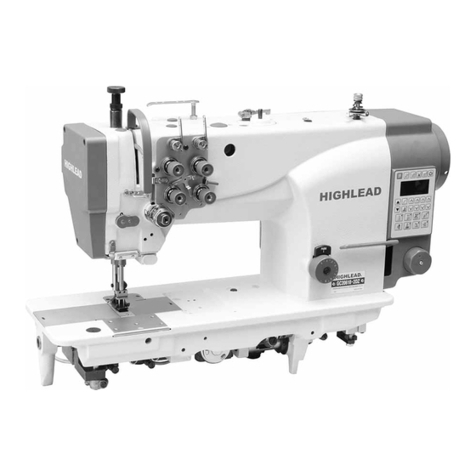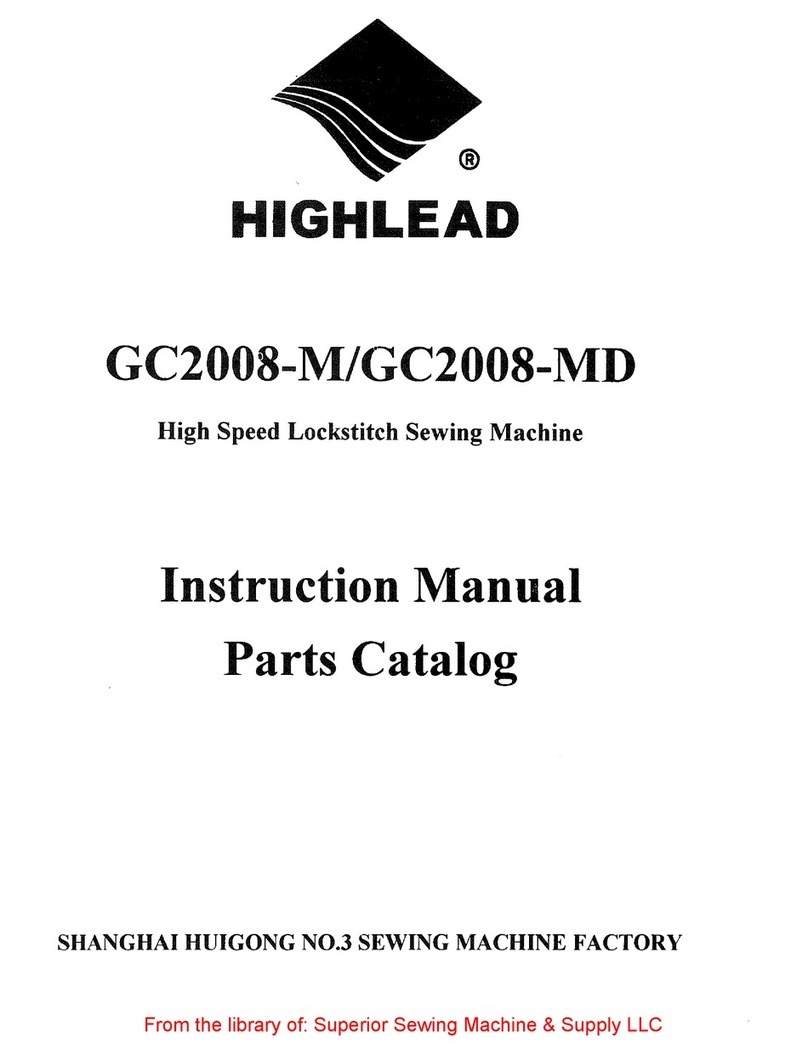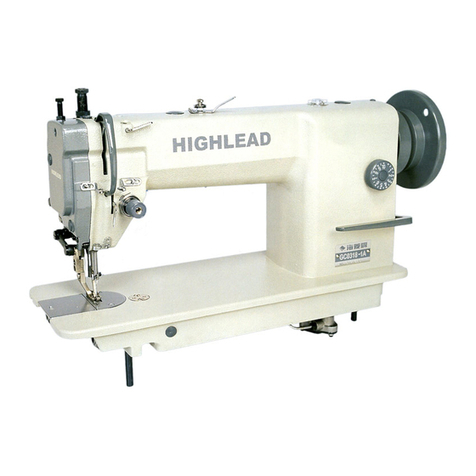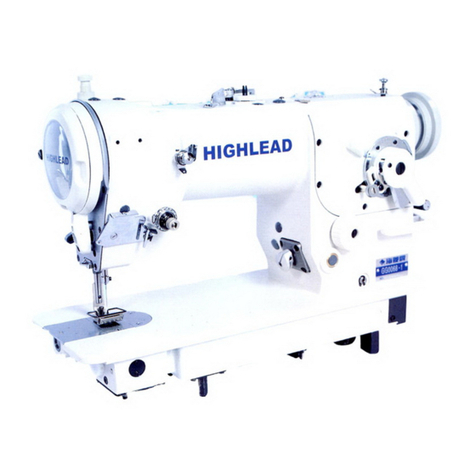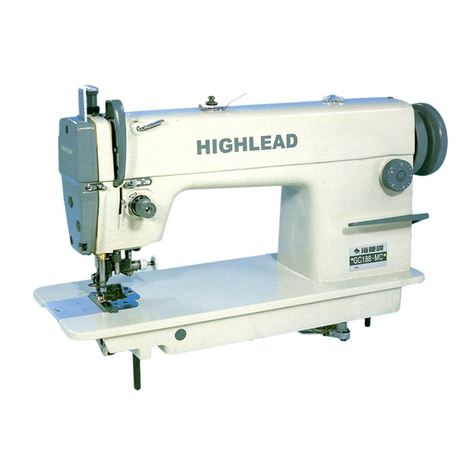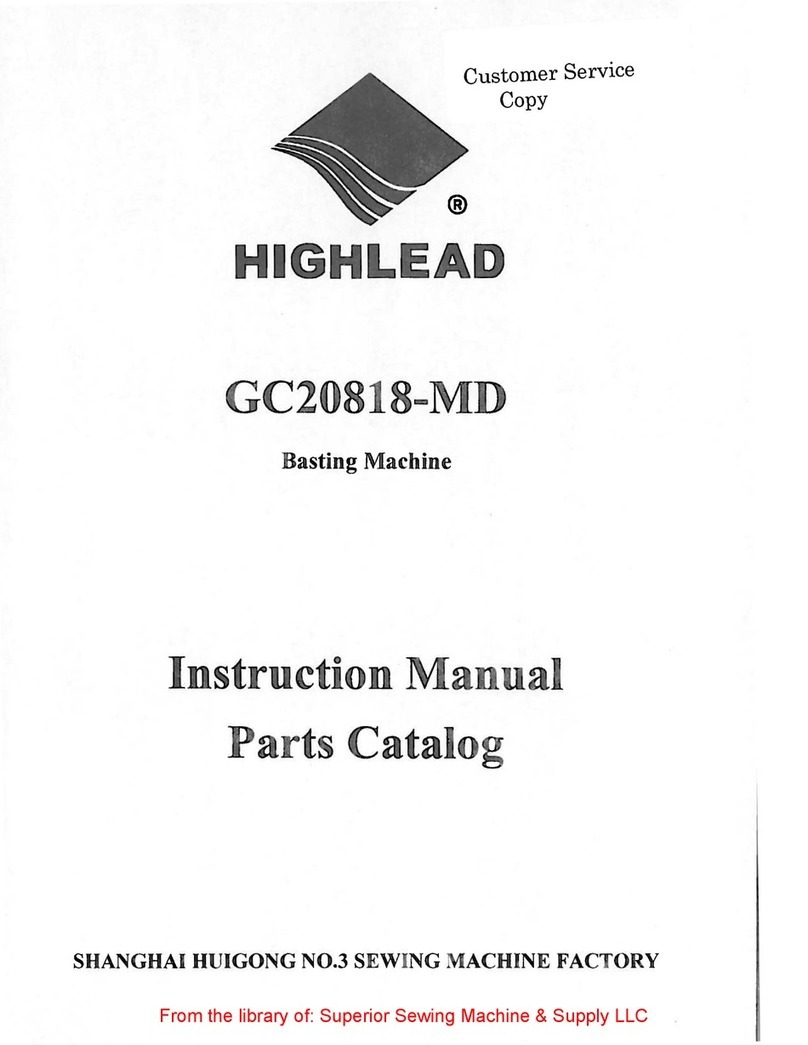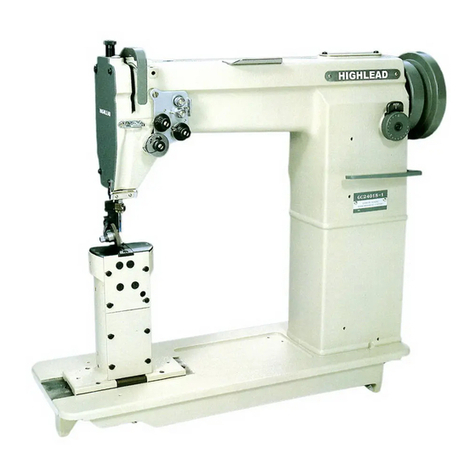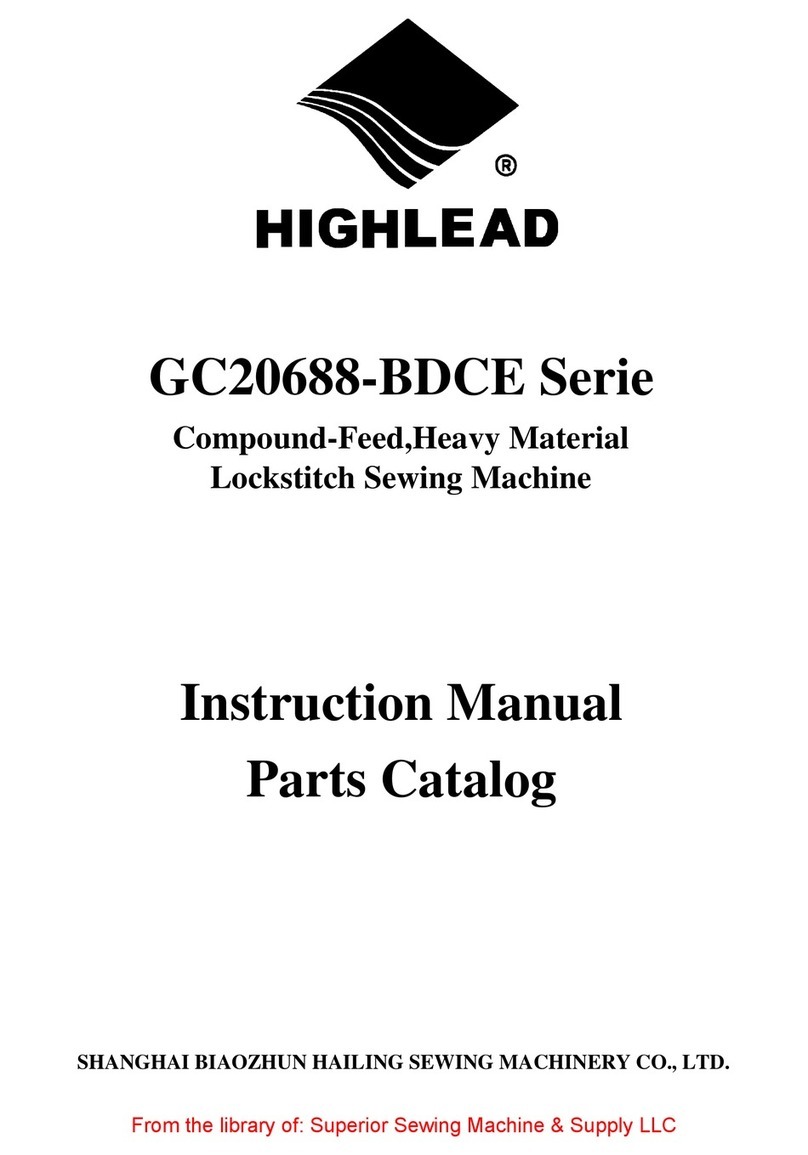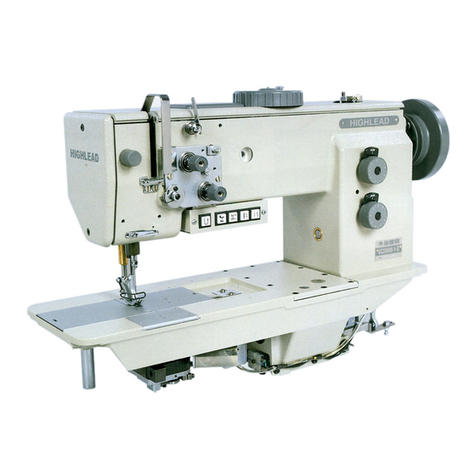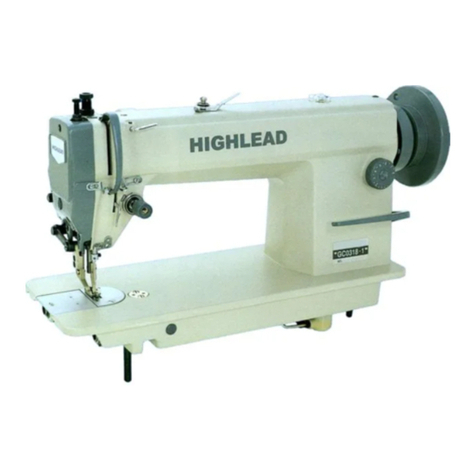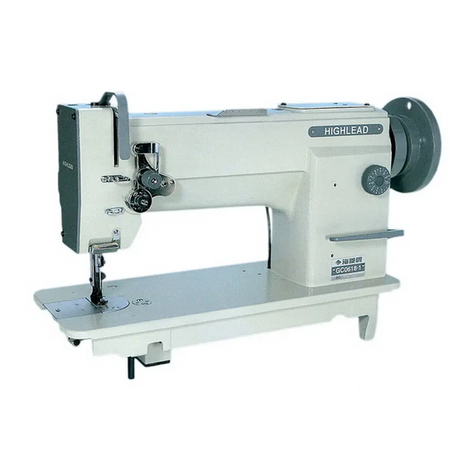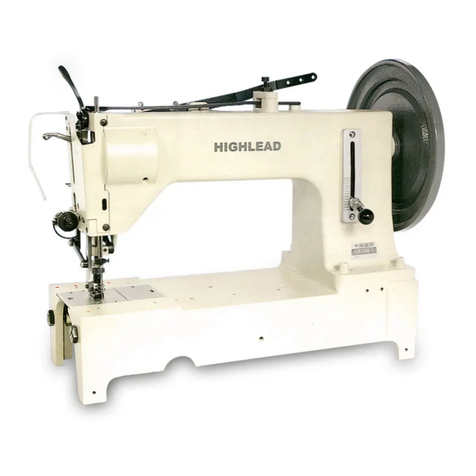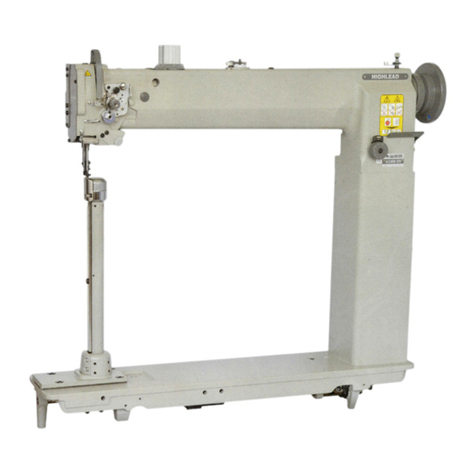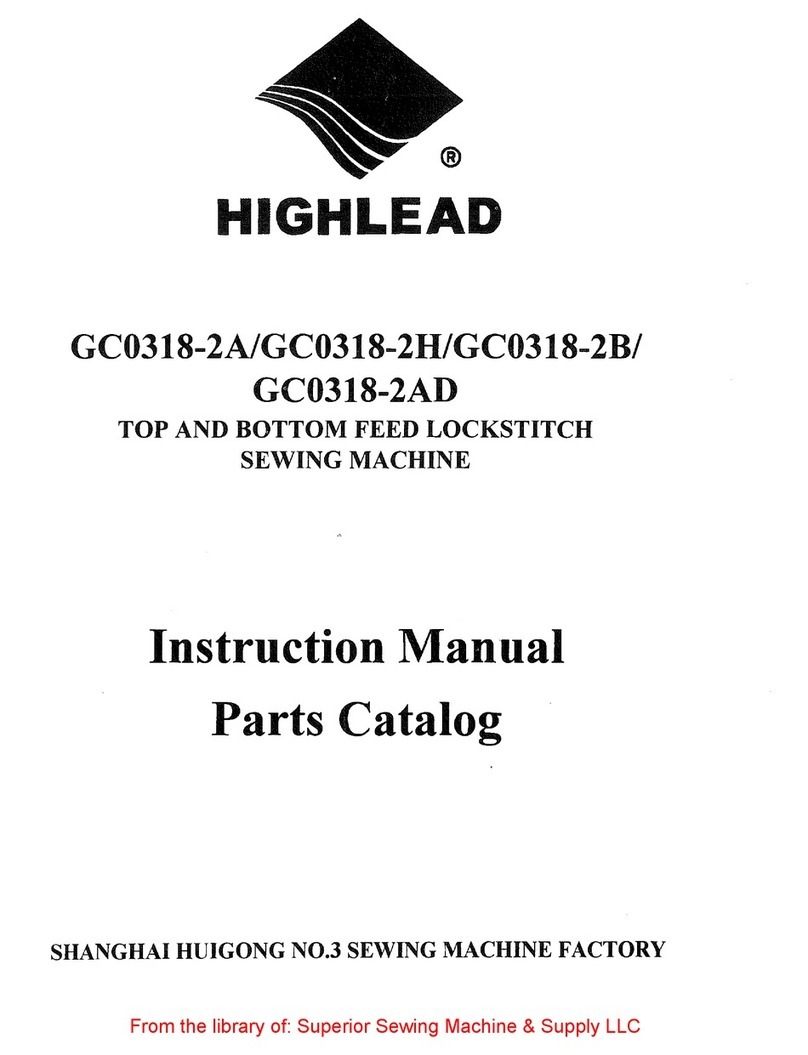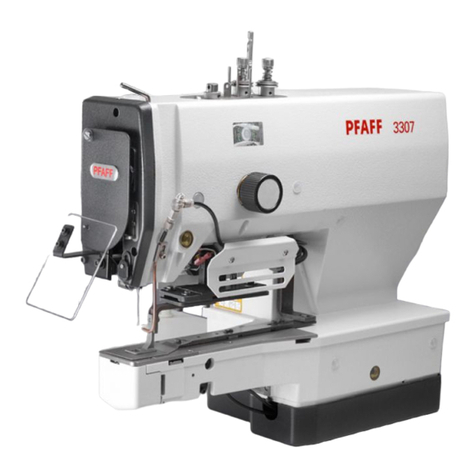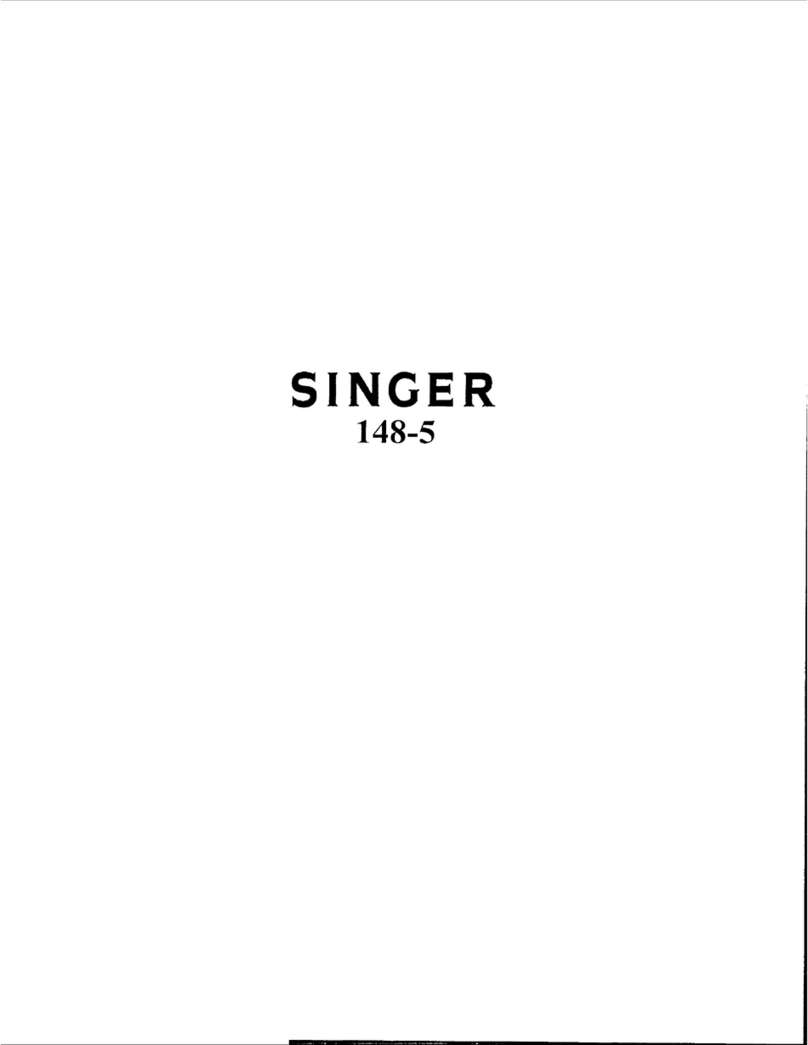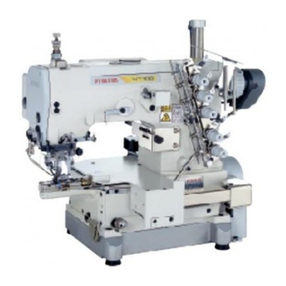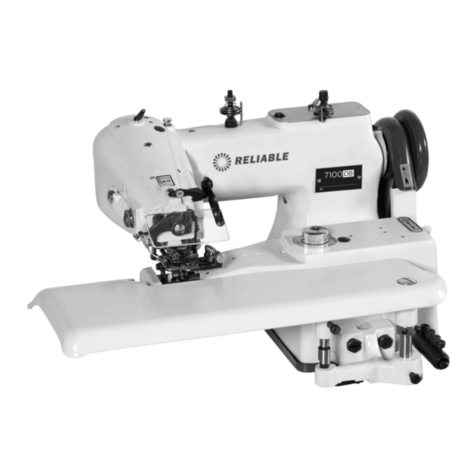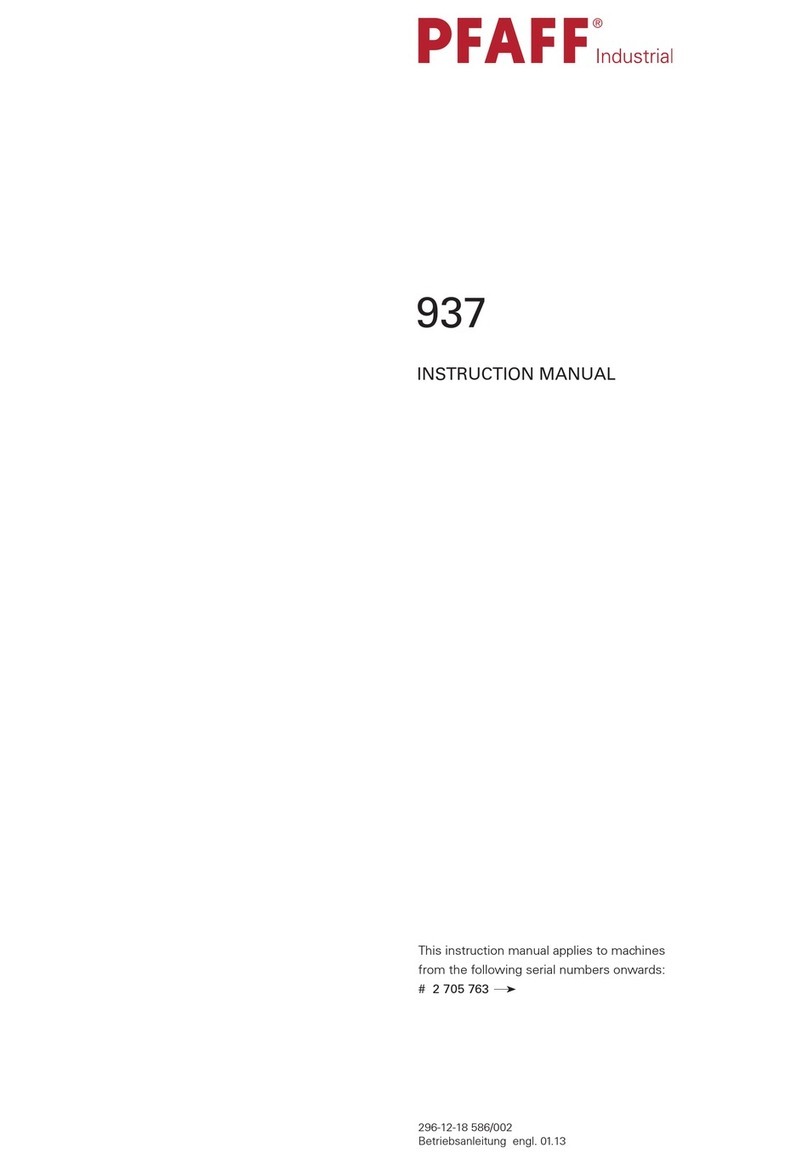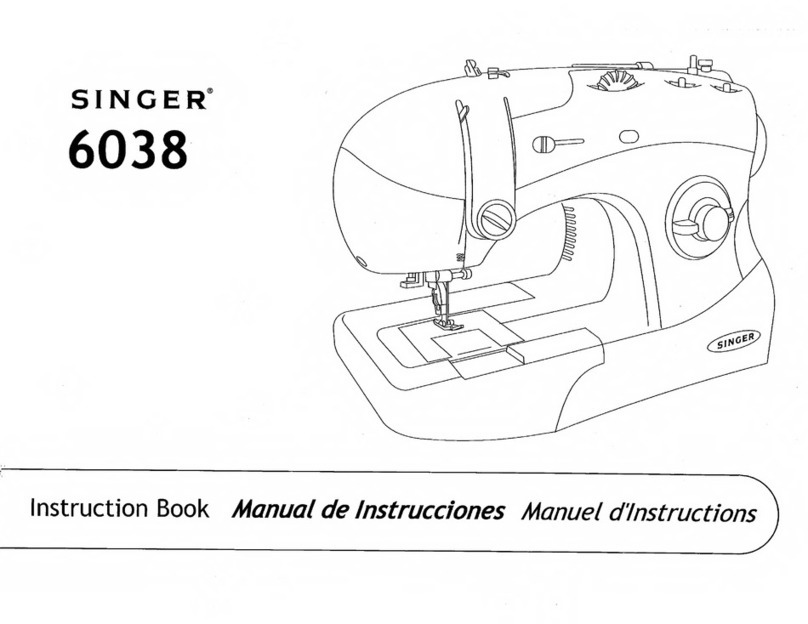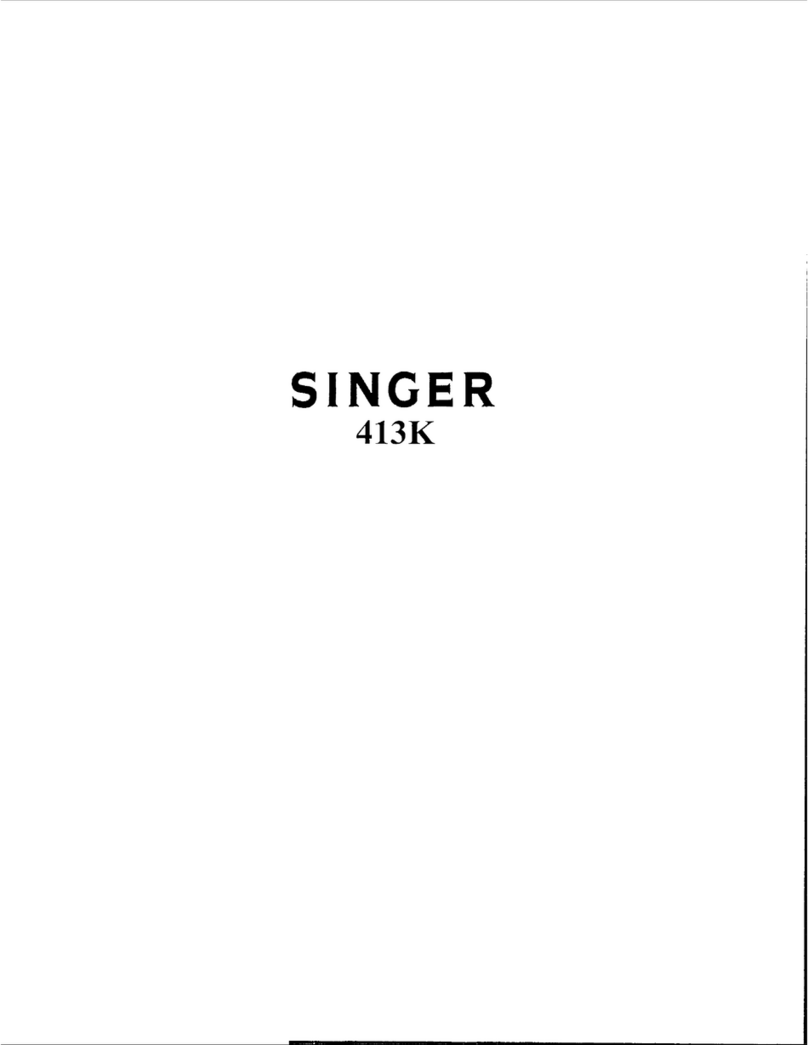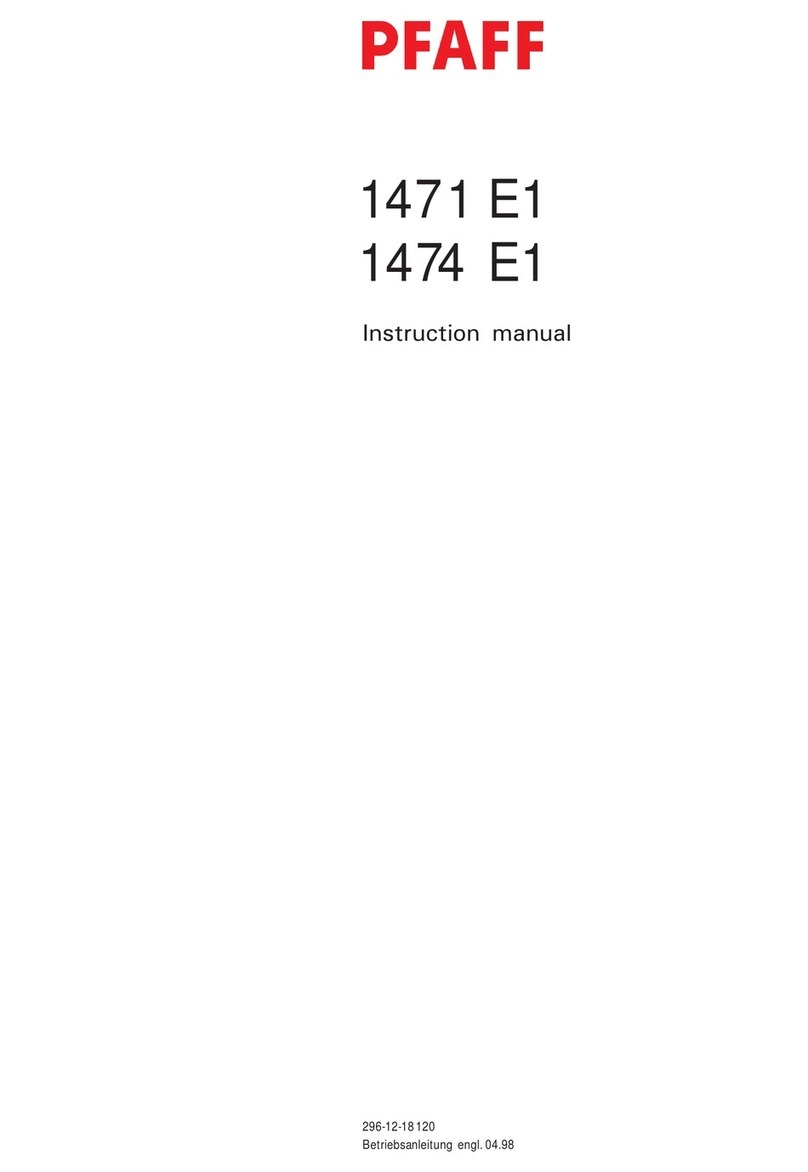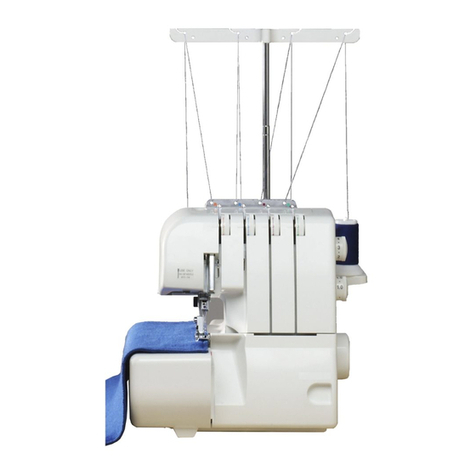
case open.
5) Take the tlu·eaded bobbin case
by
the latch and place it on the
center
stud
of
the bobbin case holder.
Release latch and press
bobbin
case on to center stud until the latch catches
the
undercut
thereon with a click that
can be heard. Permit about 5
em
of
bobbin
thread
to
hand down freely. Be sure
to
push
the slide plate to the right
before starting to sew.
8.
THREADING
(Fig.8)
l)
Raise the needle bar
to
its highest point and lead the
thread from the thread stand the follovving order. From the
thread stand lead the thread from
back
to front through the
lower guide hole in pin 1 on top
of
the machine
am1,
then
again from right to left tlu·ough the upper guide hole in this
pin. Pass thread in weaving fashion through the three holes
in guide 2, and from right
to
left over and
between
the
tension disc
3.
Now
pull thread downward and from right
to left beneath and around thread controller 4, continue to
10
pull thread upward against the pressure
of
the wire spring Fig.8
into the fork 5, in the thread controller. Guide upward through the point
of
controller
discs 6, and thread guide
7,
and from right to left through the eye in take-up lever
8,
down through thread
guide
7, again and then through 9,
I0,
ll
and from left to right through the eye
of
the needle 12.
2)
.ASter
the above threading, hold the end
of
thread with your left hand.
and
tum
the balance wheel with
\our
right hand so that bobbin thread may be picked up by needle thread.
And
put
their ends
of
thread back
through under the presser foot for starting operation.
9.
REGULATING
THE
THREAD
TENSIONS
For ordinary stitching, the tension
of
the upper and the lower threads
should
be equal so as to lock both
threads
in
the center
of
the material. (J Fig.9)
If
the tension on either
thread
is
stronger than on the other,
imperfect stitching will be the result.
If
the tension on the upper thread is
greater
than
that on the lower thread, it
will lie straight along the upper surface
of
the material. (2 Fig.9)
If
the tension
on
the
lower
thread
is
greater than
thot
on
the upper thread_ the lO\\er thread will lie straight along the underside
of
the
material.
(3
Fig.9)
I) Tension
of
the upper (needle) thread:
Before
ad_i
usting the tension
of
the upper (needle) thread, be certain that
the
presser
foot
is
let down but not
in
lifted position. To adjust tension, turn serrated nut
(A
Fig.
S)
on tension
device
to
clockwise
to increase tension,
while tuming it to counter-clockwise to decrease it.
2) Tension
of
the lower (bobbin) threod (Fig 7)
The 10\\er (bobbin) threod tension
is
controlled
hy
the larger screw
(2
Fig.
7)
neor"thc
end
of
the spring at
the outside
or
the bobbin case. Turning this screw to clockwise to increase the
thread
tension. while turning it to
counter-clockwise to decrease it.
2
~
1 Upper
thread
strong
j
We
II
ba I
ance
or
Iower
thread
weak
3
Upper
thread
weak
or
lower
thread
strong
Fig.9
-5-
From the library of: Diamond Needle Corp
